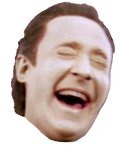this post was submitted on 26 Oct 2023
72 points (100.0% liked)
technology
23218 readers
2 users here now
On the road to fully automated luxury gay space communism.
Spreading Linux propaganda since 2020
- Ways to run Microsoft/Adobe and more on Linux
- The Ultimate FOSS Guide For Android
- Great libre software on Windows
- Hey you, the lib still using Chrome. Read this post!
Rules:
- 1. Obviously abide by the sitewide code of conduct. Bigotry will be met with an immediate ban
- 2. This community is about technology. Offtopic is permitted as long as it is kept in the comment sections
- 3. Although this is not /c/libre, FOSS related posting is tolerated, and even welcome in the case of effort posts
- 4. We believe technology should be liberating. As such, avoid promoting proprietary and/or bourgeois technology
- 5. Explanatory posts to correct the potential mistakes a comrade made in a post of their own are allowed, as long as they remain respectful
- 6. No crypto (Bitcoin, NFT, etc.) speculation, unless it is purely informative and not too cringe
- 7. Absolutely no tech bro shit. If you have a good opinion of Silicon Valley billionaires please manifest yourself so we can ban you.
founded 5 years ago
MODERATORS
you are viewing a single comment's thread
view the rest of the comments
view the rest of the comments
It can at least protect individual artists from having their future work being made into a LORA, which is happening to basically every NSFW artist in existence at the moment.
Hm, yeah reading more about it, it doesn't function the same as Glaze and its possible it wouldn't have a poisoning effect with a LORA, and it's unclear if the effect could be subverted by upscaling and downscaling the images before putting them into training data.
a what
A LORA is a 'Low rank adaptation' diffusion model, which are generally created for the Stable Diffusion family of image generators. Unlike the main image generator models which use databases of hundreds of millions of images, LORAs can be trained on a database of a few hundred images or even single digit numbers of images.
They're typically used on top of the main Stable Diffusion models in order to get results of a specific subject (ie a LORA trained on a specific anime character) or to get results in specific art styles (ie a LORA trained off of hypothetical porn artist Biggs McTiddies' body of work)
guess my hamster has a new last name now
I didn't even realize you were Biggs' owner oh my god
I wouldn't be confident about that. Usually people training a LORA will be training the text encoder as well as the Unet that does the actual diffusion process. If you pass the model images that visually look like cats, are labeled as "a picture of a cat", and that the text encoder is aligned towards thinking is "a picture of a dog" (the part that Nightshade does), you would in theory be reinforcing what pictures of cats look like to the text encoder, and it would end up moving the vectors of "picture of a cat" and "picture of a dog" to where they are very well clear of each other. Nightshade essentially relies on being able to line up the Unet to the wrong spots on the text encoder, which shouldn't happen if the text encoder is allowed to move as well.